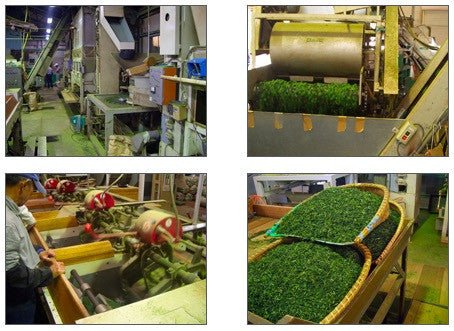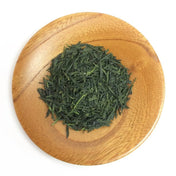The Japanese Ministry of Agriculture, Forestry and Fisheries has just released data on 2016 production of tea in Japan.
PDF report can be downloaded here (Japanese only):
http://www.maff.go.jp/j/tokei/kouhyou/sakumotu/sakkyou_kome/attach/pdf/index-11.pdf
Excel data (Japanese only) can be downloaded here:
http://www.e-stat.go.jp/SG1/estat/Xlsdl.do?sinfid=000031534571
Key takeaways
- Total production of tea increased to 80,200 tons of processed but unfinished tea leaf compared to 2015's dip to 79,500 tons (which was the first time production has dipped below 80,000 tons in several decades). The increase was in bancha production, not shaded tea production despite the growing demand for matcha. All other categories saw a slight decrease.
- The latest data for average price of unfinished tea is still from 2015. And was 1302 yen / kg for regular sencha (down from 1590 yen in 2011), 1994 yen / kg for first flush (down from 2438 yen in 2011). Obviously this price is far below what we sell even for wholesale, because we are mostly selling tea that has been refined further and from small producers rather than the biggest mass producers. It is a terrible indication for the industry and for farmers in particular that the price continues to decline though.
- The price decline is in contrast to the rise in price of green tea imports from China, which according to a May 2016 report from the Ministry saw a rise from 261 yen / kg in 2011 to 582 yen per kg in 2015. (Source in Japanese: http://www.maff.go.jp/j/seisan/tokusan/cha/pdf/cha_meguji_h2805.pdf)
- The amount of area used for tea farming has also decreased in 2016 from 44,000 hecatres (ha) in 2015 to 43,100 ha in 2016. In 2009, the ministry reported 47,300 ha, and 46,200 ha in 2011.
- Shizuoka remains the largest production region in Japan with 30,700 tons or 37.4% of the total, followed by Kagoshima with 24,600 tons or 30%.
- Matcha production is approximated by the production of tencha tea leaf since matcha itself is processed from the agricultural crop of tencha leaf. However, the ministry has been grouping all shaded leaf (including kabusecha and gyokuro) into the same category for several years now. For shaded leaf, there was a slight drop from 7000 tons in 2015 to 6980 tons in 2016. We will update this page if we can determine tencha production based on prefectural rather than national data.
If interested in more specific information, please leave a question in the comments below.



2 comments
Hemal de Silva, Any company in Japan needs to follow Japanese labor law, so in general minimum wage at the very least (this varies from region to region, but in general about US$7-9 per hour). In fact, in many locations, if a company needs to hire extra workers during harvest time for example, they may actually pay $10-15/per hour depending on what needs to be done. In most cases in Japan, farmers don’t hire workers but are a family operated business and help each other out for free when needed. Simple tea picking by hand for example is often volunteer work, since it is only done in order to create tea for competitions, not commercial production. In that case it is usually neighbors, relatives, even customers as a PR event. Obviously, this is a very different situation than tea plantations in other countries.
What are the daily or hourly wages of workers in tea plantations in Japan?